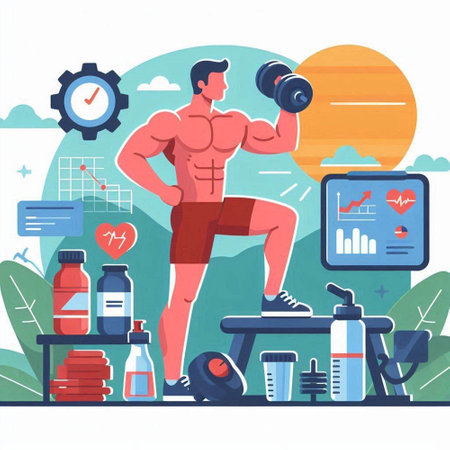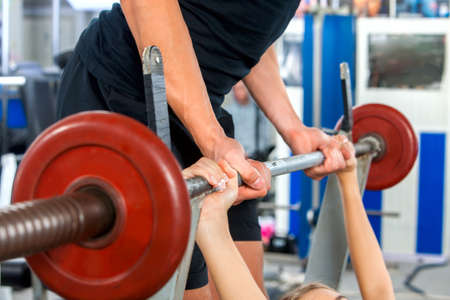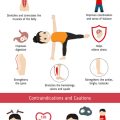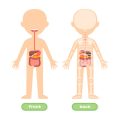1. Understanding Rotator Cuff Repair and Recovery Basics
What is the Rotator Cuff?
The rotator cuff is a group of four muscles and their tendons that stabilize your shoulder joint and help you lift and rotate your arm. Whether you’re an athlete throwing a baseball or just reaching for groceries, your rotator cuff plays a key role in shoulder movement.
Common Causes of Rotator Cuff Injuries
Rotator cuff injuries can happen to anyone, not just athletes. Here’s a quick look at the main causes:
| Cause | Description | Who’s at Risk? |
|---|---|---|
| Repetitive Overhead Movements | Frequent arm movements above the head (like pitching or swimming) | Athletes, construction workers, painters |
| Acute Trauma | A sudden injury from falling or lifting something heavy | All ages, especially during accidents |
| Degeneration with Age | Tendons wear down over time due to aging | Adults over 40, non-athletes included |
| Poor Posture & Weak Muscles | Slouching or weak shoulder muscles put extra stress on the rotator cuff | Sedentary individuals, office workers |
The Surgical Procedure: What Happens During Rotator Cuff Repair?
If physical therapy and other treatments don’t help, surgery may be recommended. Most repairs today are done arthroscopically, using small incisions and a camera to guide the surgeon. The torn tendon is reattached to the bone using special anchors and sutures. Sometimes open surgery is needed for larger tears.
Surgical Steps in Simple Terms:
- Anesthesia is given so you won’t feel pain.
- The surgeon inserts tiny instruments through small cuts around your shoulder.
- The torn tendon is identified and cleaned up.
- Sutures and anchors are used to secure the tendon back to the bone.
- The incisions are closed and your arm is placed in a sling.
Immediate Post-Op Expectations: Athletes vs. Non-Athletes
| Athletes | Non-Athletes | |
|---|---|---|
| Pain Management | Pain usually managed with medication; may have higher pain tolerance from training background. | Pain also managed with medication; anxiety about mobility more common. |
| Sling Use | Sling worn for several weeks to protect repair; eager to return to sports but must follow guidelines. | Sling use is essential for healing; daily tasks may feel more challenging initially. |
| Physical Therapy Start Time | Often begin gentle PT within days; customized program based on sport demands. | PT starts soon after surgery; pace adjusted for lifestyle needs and overall health. |
| Mental Outlook | May struggle with being sidelined; strong motivation for fast recovery. | Focus on regaining independence in daily life; progress may feel slow but steady. |
Understanding these basics helps set realistic expectations and lays the groundwork for successful recovery, no matter your activity level.
2. Setting Realistic Goals for Rehab
When recovering from rotator cuff repair, both athletes and non-athletes benefit from setting clear and realistic goals for their rehabilitation journey. Working closely with healthcare providers, such as physical therapists and orthopedic specialists, is key to creating a recovery plan that fits your unique lifestyle, age, and desired activity level.
Why Goal Setting Matters
Setting achievable goals helps you stay motivated and track progress during recovery. It also ensures that your rehab plan matches what’s most important to you—whether thats returning to competitive sports, resuming work duties, or simply being able to perform daily tasks without pain.
How to Work with Your Healthcare Team
Your healthcare team will assess your current abilities, review your medical history, and discuss your personal goals. Together, youll set short-term and long-term targets that are realistic for your situation.
Examples of Short-Term and Long-Term Goals
| Type of Goal | Athletes | Non-Athletes |
|---|---|---|
| Short-Term (First 6 Weeks) | Regain basic shoulder motion Start gentle strengthening exercises |
Manage pain and swelling Perform simple self-care tasks independently |
| Long-Term (3-12 Months) | Return to sport-specific drills Achieve pre-injury performance levels if possible |
Lifting groceries comfortably Sleeping through the night without shoulder pain |
Tailoring Goals to Age & Lifestyle
Your age and daily activities play a big role in goal setting. For example, younger athletes may aim for a full return to sports, while older adults might focus on regaining independence at home or work. Its important to be honest about what matters most to you and communicate this with your rehab team.
Staying Flexible Along the Way
Recovery isn’t always a straight path—setbacks can happen. Regular check-ins with your healthcare provider help adjust goals as needed so you stay on track and avoid frustration.

3. Optimizing Physical Therapy and Home Exercise
Evidence-Based Physical Therapy Techniques
Physical therapy is a cornerstone of recovery after rotator cuff repair, whether you’re an athlete aiming to get back in the game or a non-athlete returning to daily life. Evidence-based physical therapy techniques are proven through research to help restore shoulder strength, range of motion, and function. Here are some common methods your physical therapist may use:
| Technique | Purpose | Example Exercises |
|---|---|---|
| Passive Range of Motion (PROM) | Gently moves the arm without muscle activation to protect healing tissue | Pendulum swings, assisted arm lifts |
| Active-Assisted Range of Motion (AAROM) | Involves both therapist or equipment assistance and patient effort | Pulley exercises, stick-assisted lifts |
| Strengthening Exercises | Builds up shoulder muscles as healing progresses | Isometric holds, resistance band work |
| Functional Training | Prepares for real-life or sports activities | Simulated reaching, sport-specific drills |
The Importance of Sticking to Your Home Exercise Plan
Your progress depends greatly on how consistently you perform your home exercise program. Skipping sessions can delay recovery and limit your outcome. Make it a habit—set a daily reminder, pair exercises with routines (like after brushing teeth), and track your progress.
- Stay Consistent: Even short daily sessions add up over time.
- Follow Your Therapist’s Instructions: Proper technique prevents reinjury.
- Ask Questions: If something hurts or feels off, reach out to your therapist.
Sample Weekly Home Exercise Schedule (General Example)
| Day | Main Focus | Duration (Minutes) |
|---|---|---|
| Monday/Thursday/Saturday | Range of motion & stretching | 15-20 min |
| Tuesday/Friday/Sunday | Strengthening & stability drills | 15-20 min |
| Wednesday | Rest or gentle stretching only | – |
Leveraging Technology for Better Recovery Support
The use of technology can make sticking to your rehab plan easier and more effective:
- Telehealth Visits: Virtual check-ins with your physical therapist provide feedback and adjust your plan from home.
- Rehab Apps: Mobile apps can demonstrate exercises, send reminders, and track progress so you stay motivated.
- Wearable Devices: Some smartwatches and fitness trackers monitor activity levels, helping you balance exercise and rest.
- Email & Messaging: Many clinics offer direct messaging for quick questions between appointments.
User-Friendly Rehab Apps Popular in the US (Examples)
| Name | Main Feature | Description |
|---|---|---|
| Breg Flex™ App | Exercise tracking & reminders | Sends daily reminders and shows correct form with videos. |
| Pocket Anatomy™ App | Anatomy education & visualization | Makes it easy to understand your injury and rehab process. |
| MyoTherapy App | Therapist-guided programs | Your PT can upload custom exercise plans with progress feedback. |
Your Takeaway: Make Therapy Work for You!
The best recovery happens when evidence-based therapy meets daily commitment—both in the clinic and at home. Use every tool available, from expert therapists to handy apps, to keep moving forward on your road to full shoulder health.
4. Addressing Pain Management and Mental Health
Pain Control Best Practices
Managing pain after rotator cuff repair is crucial for both athletes and non-athletes. In the U.S., doctors often recommend a combination of medication, physical therapy, and home care strategies to control pain without relying too much on prescription painkillers. Here are some common approaches:
| Pain Management Method | Description |
|---|---|
| Ice Packs | Applying ice to the shoulder for 15-20 minutes several times a day can help reduce swelling and pain. |
| Over-the-Counter Medications | Ibuprofen or acetaminophen are commonly used to manage mild to moderate pain. |
| Physical Therapy | Guided exercises improve mobility and reduce stiffness, which can also decrease discomfort over time. |
| Prescription Medication (Short-Term) | Sometimes stronger medications are prescribed right after surgery but should be used only as directed by your doctor. |
| Rest and Proper Positioning | Using pillows to support your arm while sleeping or resting can make you more comfortable. |
Staying Motivated During Setbacks
Recovery isn’t always a straight line. There may be days when progress feels slow or you experience setbacks. Staying motivated is important for both physical healing and mental well-being. Here are some ways to keep moving forward:
- Set Small Goals: Celebrate small achievements like increased range of motion or less pain during daily activities.
- Track Your Progress: Keep a journal or use an app to note improvements, even minor ones.
- Connect With Others: Join online forums or local support groups where people share similar recovery experiences.
- Communicate With Your Healthcare Team: Ask questions and express concerns so adjustments can be made to your plan if needed.
- Focus On What You Can Control: Some days will be harder than others—focus on doing your best rather than achieving perfection every day.
Mental Health Resources in the U.S.
Mental health is just as important as physical recovery. Feeling frustrated, anxious, or down is normal after surgery, especially if you’re used to being active. In the United States, there are many resources available to help support your mental health during recovery:
| Mental Health Resource | Description/Contact |
|---|---|
| Counselors & Therapists | Licensed professionals can provide strategies for coping with stress and anxiety; find them through your healthcare provider or platforms like Psychology Today. |
| Support Groups | The American Chronic Pain Association offers support groups both online and in person, focused on pain management and recovery. |
| Crisis Hotlines | The 988 Suicide & Crisis Lifeline provides free, confidential support 24/7 for people in distress. |
| Mental Health Apps | Apps like Headspace or Calm offer guided meditations and relaxation techniques that can help manage anxiety and improve sleep during recovery. |
| Your Medical Team | Your doctor or physical therapist can refer you to mental health resources if you need extra support during your recovery journey. |
The Importance of Self-Care During Recovery
Taking care of your mind and body after rotator cuff repair is essential for a full recovery. Remember that asking for help is a sign of strength—not weakness—and that patience with yourself will go a long way as you heal.
5. Safe Return to Activities and Preventing Re-Injury
Guidelines for Returning to Work, Sports, and Daily Life
After rotator cuff repair, knowing when and how to return to your daily activities is critical for both athletes and non-athletes. The timeline for getting back to work, sports, or regular routines depends on several factors, including the type of surgery, your occupation or sport, and how well you follow your rehab plan. In the United States, physical therapists and orthopedic doctors often use a staged approach to make sure recovery is safe and effective.
| Activity | Recommended Timeline* | Key Tips |
|---|---|---|
| Desk Job/Office Work | 2-6 weeks post-surgery | Start with light typing, use ergonomic support, take frequent breaks |
| Manual Labor/Heavy Lifting | 4-6 months post-surgery | Follow strict lifting restrictions, practice safe lifting techniques |
| Driving | 4-8 weeks post-surgery (once cleared by physician) | No pain meds that impair judgment; must have full arm control |
| Recreational Sports (e.g., golf, swimming) | 3-6 months post-surgery | Gradually increase activity under therapist supervision |
| Competitive Sports (e.g., baseball, basketball) | 6-12 months post-surgery | Require full range of motion and strength; pass functional tests |
| Daily Chores (laundry, cooking) | 4-12 weeks post-surgery | Avoid overhead tasks at first; use lighter loads initially |
*Timelines are general guidelines; always check with your healthcare provider.
Popular U.S. Strategies for Preventing Re-Injury
1. Gradual Progression & Listening to Your Body
Avoid rushing back too quickly. Athletes in the U.S. are encouraged to follow “return-to-play” protocols that test strength and flexibility before going back to full competition. For non-athletes, gradual return means adding one new activity at a time while monitoring for pain or swelling.
2. Emphasizing Proper Warm-Ups and Cool-Downs
A warm-up prepares your muscles for activity and helps prevent strains. Cooling down with gentle stretches reduces stiffness. These habits are commonly promoted in U.S. rehab programs.
3. Building Shoulder Strength & Flexibility
Physical therapy focuses on strengthening not just the shoulder but also the core and back muscles for better support. Exercises like resistance band work, scapular stabilization drills, and controlled stretching are widely used.
4. Modifying Movements & Ergonomics at Work/Home
If your job or hobbies involve repetitive arm movements or heavy lifting, learning new ways to move—like using both arms or keeping objects close to your body—reduces strain on the healing shoulder. Ergonomic adjustments (such as adjusting desk height or using supportive pillows) can help too.
Quick Tips Table: Staying Injury-Free After Recovery
| Tip | Description |
|---|---|
| Pace Yourself | Add activities slowly; stop if you feel pain. |
| Follow Your Rehab Plan | Stick with prescribed exercises even after feeling better. |
| Avoid Overhead Movements Early On | This protects the healing tendon from extra stress. |
| Maintain Good Posture | Sit and stand tall to reduce shoulder strain. |
| Ask For Help When Needed | If an activity feels too hard, get assistance instead of risking injury. |
If you’re unsure about starting a specific activity again, consult your surgeon or physical therapist—they know your case best and can give you tailored advice for a smooth, safe recovery journey.


